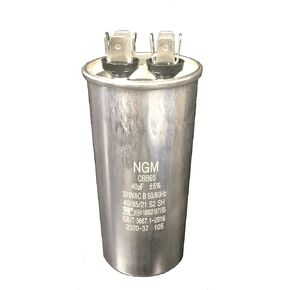- Shopping, made easy.
- /
- Get the app!
What are the signs of a bad AC capacitor?
Some common symptoms of a bad capacitor include:
●Your AC takes time to begin a cooling cycle or just won't start at all
●Your AC randomly shuts off on its own
●You can't feel any cold air in your home while your AC's running
●Your AC is emitting a humming noise during operation
●You notice smoke or detect a burning smell coming from your unit
●Your energy bills are unreasonably high
The causes of a bad AC capacitor vary, but can include: debris hitting the capacitor and causing damage; extremely hot temperatures causing the capacitor to overheat; wear and tear over a long period of time; short circuits in the cooling system; power surges; and even lightning strikes.
 35mm Piezo Transducer with Soldered Wire (Pack of 20)
KWD 4.500
35mm Piezo Transducer with Soldered Wire (Pack of 20)
KWD 4.500
 10Pcs EC11 Rotary Encoder Switch Digital Potentiometer 15MM with Switch 5 Pins D-Shaft with Nut and Washer
KWD 4.500
10Pcs EC11 Rotary Encoder Switch Digital Potentiometer 15MM with Switch 5 Pins D-Shaft with Nut and Washer
KWD 4.500
 uxcell 50Pcs 1 Ohm Resistor, 1W 5% Tolerance Metal Oxide Film Resistors, Axial Lead, Flame Proof for DIY Electronic Projects and Experiments
KWD 2.500
uxcell 50Pcs 1 Ohm Resistor, 1W 5% Tolerance Metal Oxide Film Resistors, Axial Lead, Flame Proof for DIY Electronic Projects and Experiments
KWD 2.500
 NGM Capacitor Motor Run Round 40 uF MFD 370V
KWD 5
NGM Capacitor Motor Run Round 40 uF MFD 370V
KWD 5